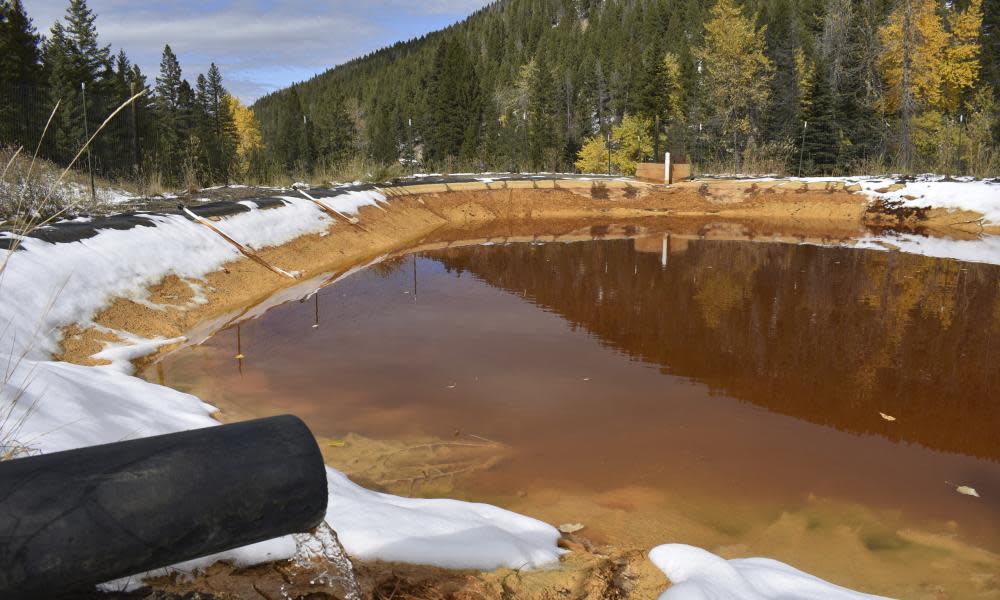Living near a US toxic waste site could shave a year off your life, study finds

Superfund sites are scattered across America: they’re places like landfills and manufacturing plants so contaminated with hazardous waste that the federal government has designated them a national priority to clean up. And according to a new, large-scale study, living near one can shave months – and in some cases, more than a year – off how long you live.
Related: ‘They couldn’t care less’: plan to solve sewage crisis in Illinois town merely ‘a patch’
After Hurricane Harvey made landfall in south-east Texas in 2017, the University of Houston’s Hanadi Rifai began research along the 50-mile-long Houston Ship Channel, the petrochemical industry’s main artery. Rifai and her colleagues noticed how neighborhoods adjacent to hazardous waste sites, such as where the San Jacinto River meets the channel, seemed to have a lower life expectancy. “That got us interested in a more comprehensive [national] study,” Rifai said.
In a first-of-its-kind study out Tuesday in Nature Communications, Rifai and a team of researchers found that living in a zip code in close proximity to a Superfund site may decrease average life expectancy by 0.2 years. It could be up to a year in socioeconomically challenged communities, says Rifai, who is a professor of civil and environmental engineering and the study’s lead author.
In places with an even higher concentration of waste sites, like Texas’s Harris County, where Rifai lives, “we’re not talking 0.2 [years] – we’re talking a few years.”
The study used data available for more than 65,000 of the 72,268 census tracts – defined geographical areas where census data is collected – within the contiguous US.
“It was a bit surprising and concerning,” Rifai says. “We weren’t sure [when we started] if the fact that you are socioeconomically challenged would make [the Superfund’s effects] worse” and would lower life expectancy.
What Rifai and her team found confirms that social and health-related disadvantages – such lack of higher education or limited income – could make those living in the vicinity of Superfund sites all the more vulnerable to contaminant exposure.
Currently, there are more than 1,300 Superfund sites in the US. The fight to rid the country of toxic waste sites begun in 1980 with the first – and most famous – Superfund site in Love Canal, a neighborhood in Niagara Falls, New York. The site was used as an industrial dump by the Hooker Chemical Company; over 22,000 tons of toxic waste buried by Hooker caused illnesses, miscarriages, birth defects and death among residents.
Now, when the EPA labels an area a Superfund site, it’s added to the National Priorities List – a catalog that guides investigations and cleanup funding toward some of the nation’s most serious sources of contamination.
But just because the site is added to the list doesn’t mean nearby residents’ lives are free from pollution. Often, the government relocates residents out of harm’s way – at least temporarily. But even when Superfund sites have been designated as “remediated” chemicals can still linger.
For others, the battle to remove toxic contaminants is still going on. Studies have shown sites without a remediation strategy can continue to leak their pollutants into surrounding areas, prompting billions in medical bills and lost productivity alone.
The perils posed by the nation’s industrial wastelands can be amplified with other natural hazards, Rifai says.
“We call them cascading impacts. We wanted to see, in the big context of these waste sites, how an event might bring toxic chemicals closer to people.”
Approximately 60% of Superfund sites managed by the EPA could potentially be affected by natural hazards; they are vulnerable to hurricanes, flooding, sea-level rise, increased precipitation or wildfires, all of which are intensifying as the planet warms. Flooding, for example, can increase the chances that dangerous chemicals can be released and contaminate nearby land and water, putting communities at risk of adverse health effects.
Thus, the study’s authors write, it is essential to understand to what extent being located in a Fema-defined floodplain could influence the effects of Superfund sites on average life expectancy.
“You may think you’ve already built with an issue [in mind], but a natural hazard may change that picture. You may have to go back and rethink what you did and make sure that it’s hardened against natural hazards, so that you don’t have continuing exposure or any emerging exposure,” Rifai adds.

 Yahoo News
Yahoo News 
